Published
- 17 min read
Top IBM Cloud Alternatives in 2025
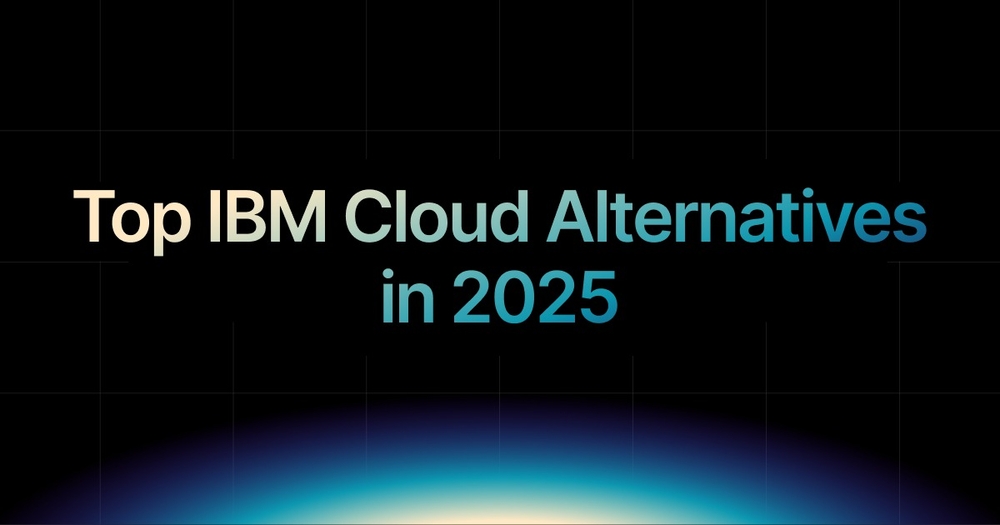
Introduction
IBM Cloud has long been known for its enterprise-grade infrastructure, hybrid capabilities, and integration with Watson AI and Red Hat OpenShift.
But as the cloud ecosystem evolves, many teams find IBM Cloud struggling to keep up with newer, developer-friendly, and cost-efficient platforms.
In 2025, companies of all sizes, from startups building SaaS products to global enterprises running mission-critical workloads are re-evaluating their cloud choices.
The reasons are clear: unpredictable pricing, slower product innovation, limited community support, and fewer global data centres compared to hyperscalers like AWS, Azure, and Google Cloud.
If you’ve been wondering whether it’s time to move away from IBM Cloud, or you’re simply exploring better options before making a long-term commitment, this guide is for you.
We’ll look at the top IBM Cloud alternatives in 2025, analyse their strengths, pricing, and ideal use cases,
Why Businesses Are Moving Away from IBM Cloud?
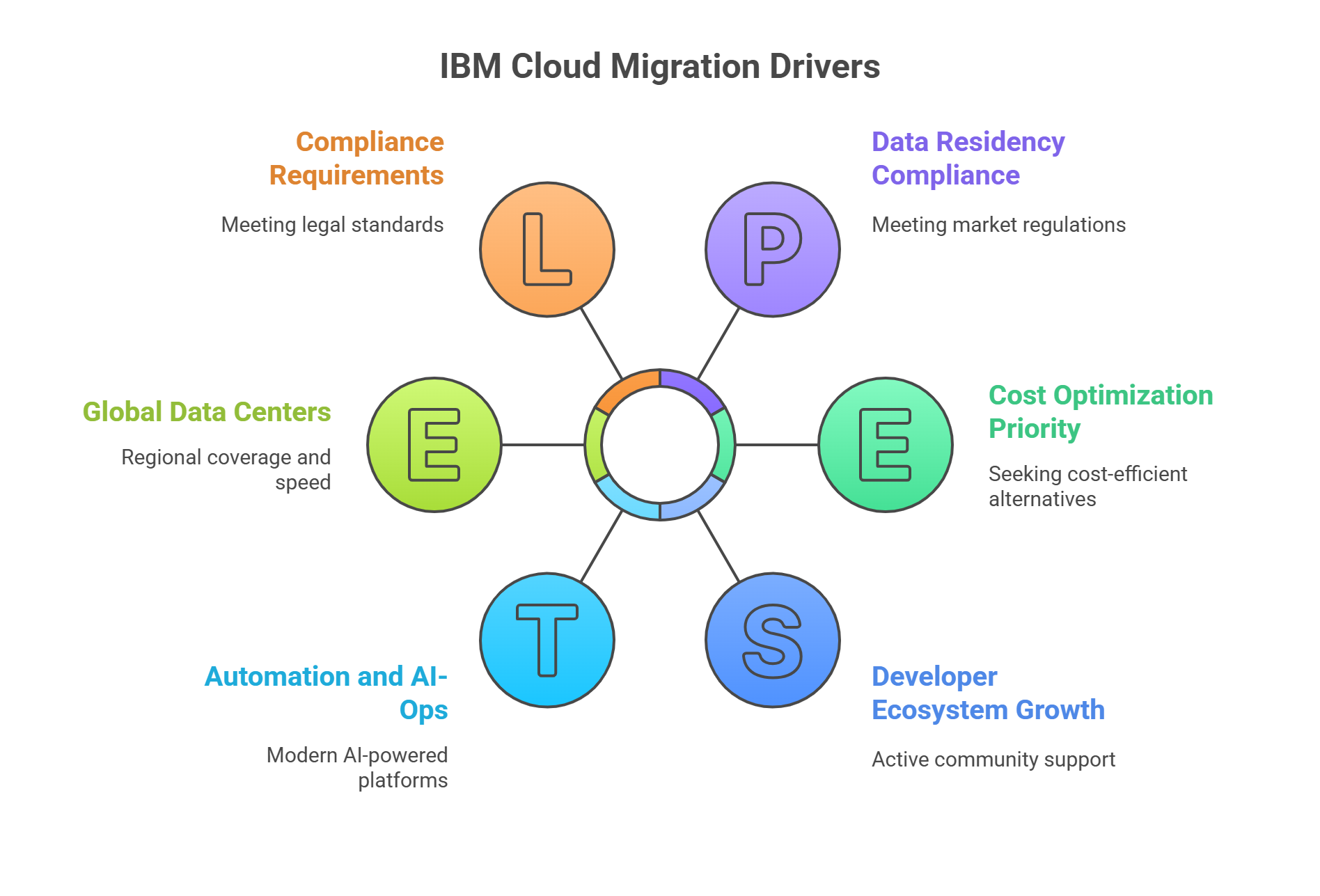 IBM Cloud still holds a strong position in enterprise IT, especially for organizations with legacy systems and hybrid infrastructure needs. However, many modern teams and startups find it increasingly difficult to justify sticking with it when compared to faster, more agile cloud providers.
IBM Cloud still holds a strong position in enterprise IT, especially for organizations with legacy systems and hybrid infrastructure needs. However, many modern teams and startups find it increasingly difficult to justify sticking with it when compared to faster, more agile cloud providers.
Here are the main reasons businesses are migrating away from IBM Cloud in 2025:
1. Complex Pricing and Limited Transparency
IBM Cloud’s pricing structure can be confusing, especially for teams trying to estimate monthly costs across compute, storage, and AI services. Unlike newer IaaS platforms that offer usage-based or flat pricing, IBM’s billing model often leads to unpredictability and over-spending. If cost optimization is your top priority, platforms with AI-driven resource management and real-time usage visibility deliver far better results.
2. Limited Global Data Centers
While IBM Cloud operates several data centers worldwide, it still lags behind major providers like AWS or Azure in regional coverage and network speed. This can lead to higher latency for end users and challenges in meeting data-residency compliance for specific markets.
3. Smaller Developer Ecosystem
Developers prefer ecosystems that are easy to integrate, well-documented, and supported by active communities. Compared to AWS or Google Cloud, IBM Cloud’s documentation and open-source ecosystem remain relatively limited, slowing down onboarding and innovation.
4. Fewer Automation and AI-Ops Features
Ironically, despite IBM’s strong AI branding, many of its DevOps and infrastructure automation tools feel dated compared to modern AI-powered platforms. Teams now prefer solutions that can automatically scale resources, detect performance bottlenecks, and reduce operational overhead.
5. Complex Onboarding and Integration
IBM Cloud’s interface and service architecture were built with large enterprises in mind. For smaller teams or startups, setup time and integration complexity can become significant barriers, especially when compared to platforms offering one-click deployment and automated CI/CD pipelines.
In short, businesses are seeking faster, simpler, and more cost-efficient alternatives, ones that minimize manual setup, optimize cloud spending, and deliver real-time visibility into performance.
Top IBM Cloud Alternatives in 2025
When choosing an IBM Cloud alternative, the goal isn’t just to find a provider with similar services, but one that simplifies deployment, improves performance, and reduces costs.
Below are the top platforms businesses are switching to in 2025, starting with the most developer-friendly and cost-efficient solution.
1. Kuberns: The AI-Driven Modern Alternative to IBM Cloud
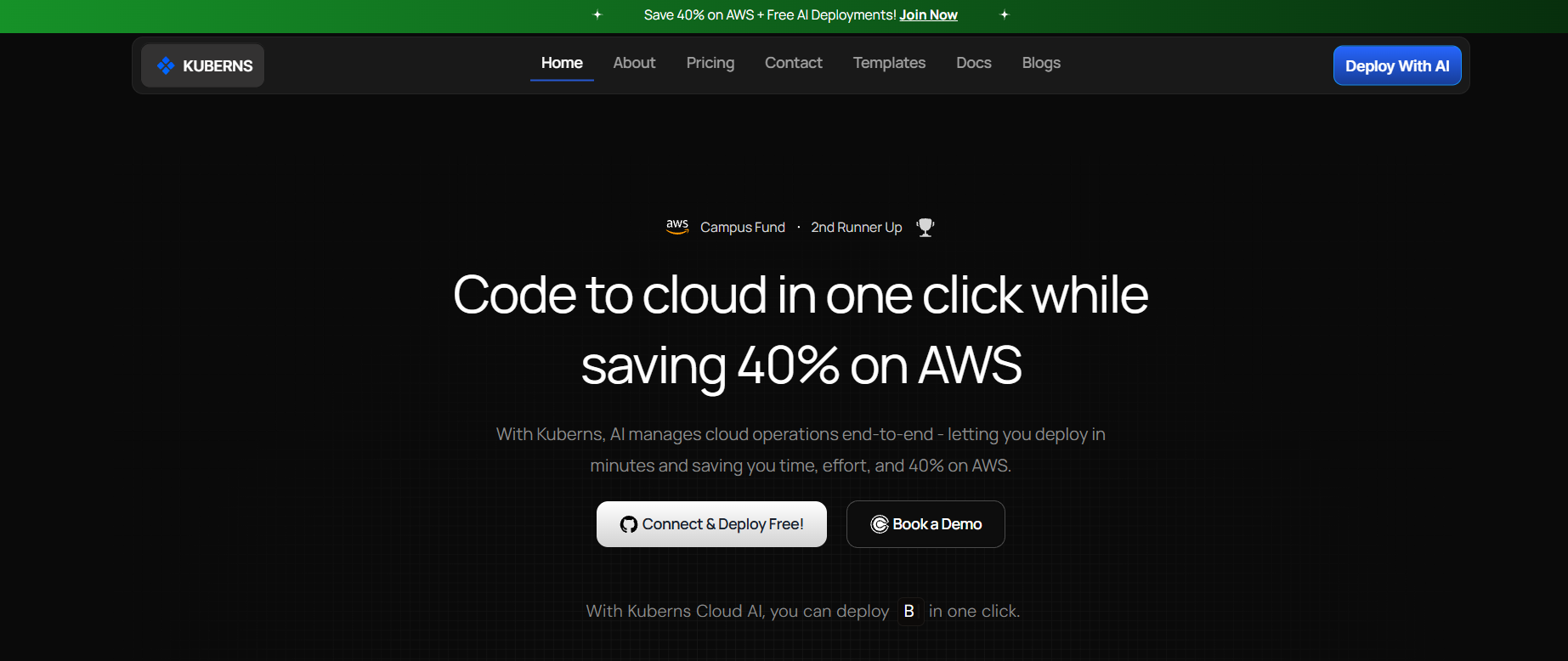 Kuberns is a next-generation cloud platform designed to automate deployments, scaling, and monitoring using AI.
Kuberns is a next-generation cloud platform designed to automate deployments, scaling, and monitoring using AI.
Unlike IBM Cloud, which can feel enterprise-heavy and complex, Kuberns focuses on simplicity, speed, and intelligent optimization.
Built on AWS infrastructure, it offers the reliability of a hyperscaler while helping teams save up to 40% on cloud costs through our smarter resource allocation. You can deploy applications directly from your GitHub repository in one click, without managing servers or writing long configuration files.
What makes Kuberns stand out?
- AI-powered deployment automation that eliminates manual setup
- One-click deployment with built-in CI/CD pipelines
- Transparent, usage-based pricing (no hidden compute or bandwidth costs)
- Automatic monitoring and logging, accessible through a clean dashboard
- Seamless scaling across multiple environments
For startups, SaaS builders, and growing development teams, Kuberns is a modern alternative that brings together everything IBM Cloud lacks: flexibility, predictability, and effortless deployment.
2. Amazon Web Services (AWS)
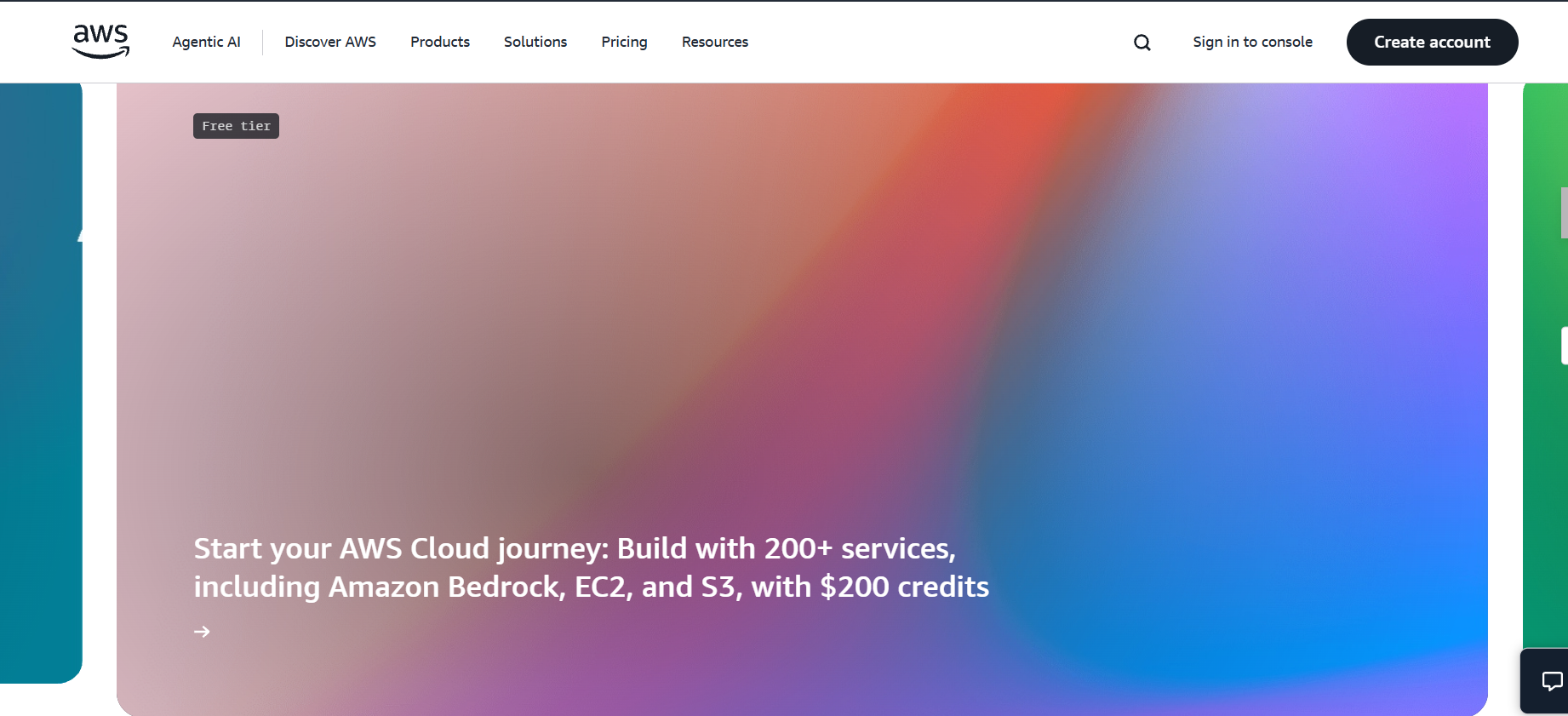 AWS remains the global leader in the IaaS market and is often the first platform teams evaluate when moving away from IBM Cloud. With thousands of services covering compute, storage, AI, and analytics, AWS offers near-limitless scalability.
AWS remains the global leader in the IaaS market and is often the first platform teams evaluate when moving away from IBM Cloud. With thousands of services covering compute, storage, AI, and analytics, AWS offers near-limitless scalability.
However, that flexibility often comes with complexity. For small to mid-sized teams, managing infrastructure on AWS can be time-consuming and costly without expert configuration.
Where AWS excels?
- Massive ecosystem and partner network
- Unmatched global data center coverage
- Reliable uptime and performance
Where AWS falls short?
- Complex pricing structure that can lead to overspending
- Requires experienced DevOps engineers to manage effectively
If you love AWS performance but want simpler management and predictable pricing, Kuberns (built on AWS infrastructure) delivers the same reliability with far less complexity.
Check how you can cut AWS Bills by 40% Without Compromising on Security or Features
3. Microsoft Azure
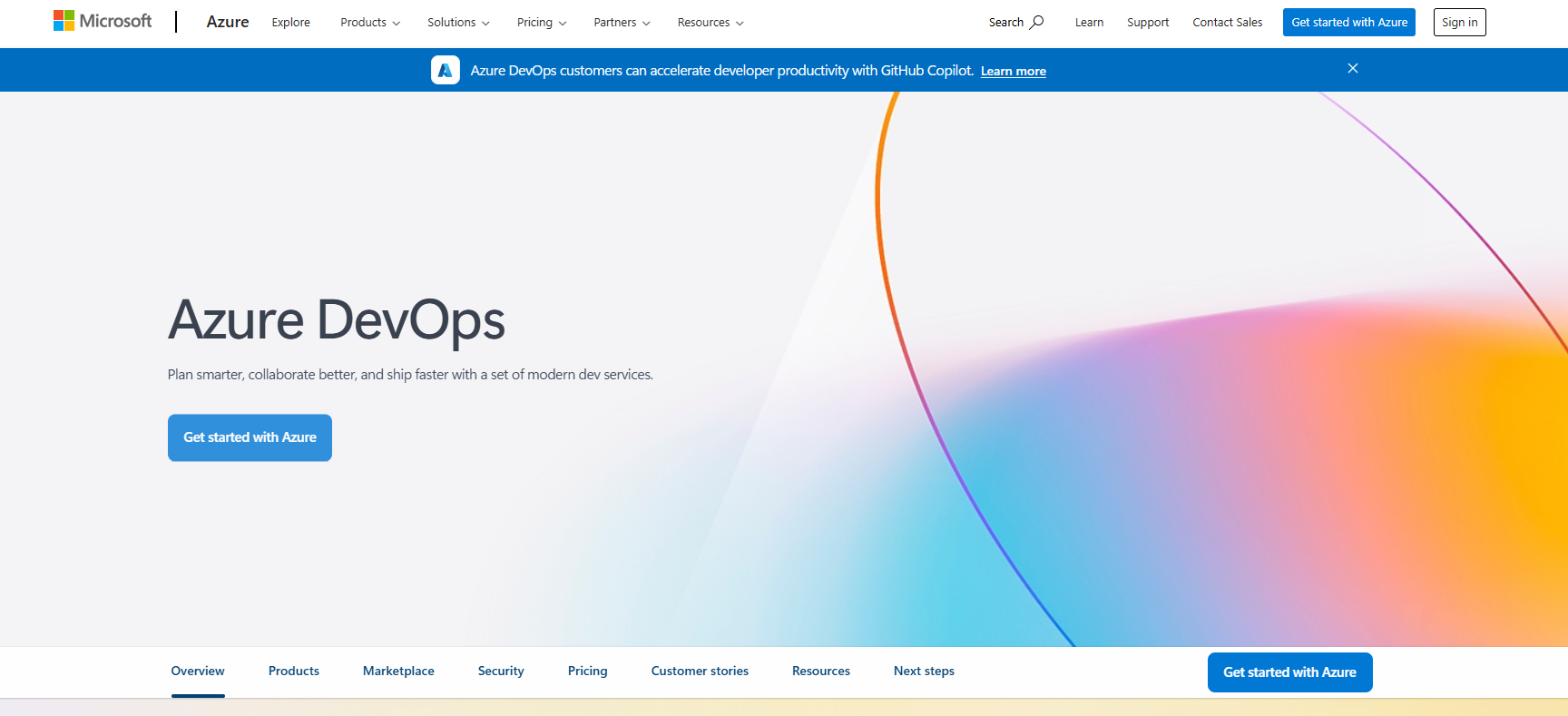 Azure is one of IBM Cloud’s closest competitors for enterprise adoption. It integrates tightly with Microsoft’s ecosystem, making it ideal for companies already using tools like Windows Server, Active Directory, and Office 365.
Azure is one of IBM Cloud’s closest competitors for enterprise adoption. It integrates tightly with Microsoft’s ecosystem, making it ideal for companies already using tools like Windows Server, Active Directory, and Office 365.
Azure provides a robust hybrid cloud model, but its learning curve and complex pricing make it less appealing for smaller teams or developers who need rapid deployment.
Where Azure excels?
- Strong hybrid and multi-cloud capabilities
- Excellent enterprise integrations
- Extensive compliance and governance options
Where Azure falls short?
- Complicated UI and service architecture
- Requires expertise to optimize workloads
Azure is a great choice for large enterprises with an existing Microsoft stack, but startups or smaller teams often prefer simpler, AI-driven platforms for faster deployment and reduced overhead.
Check out the Top Azure Alternatives
4. Google Cloud Platform (GCP)
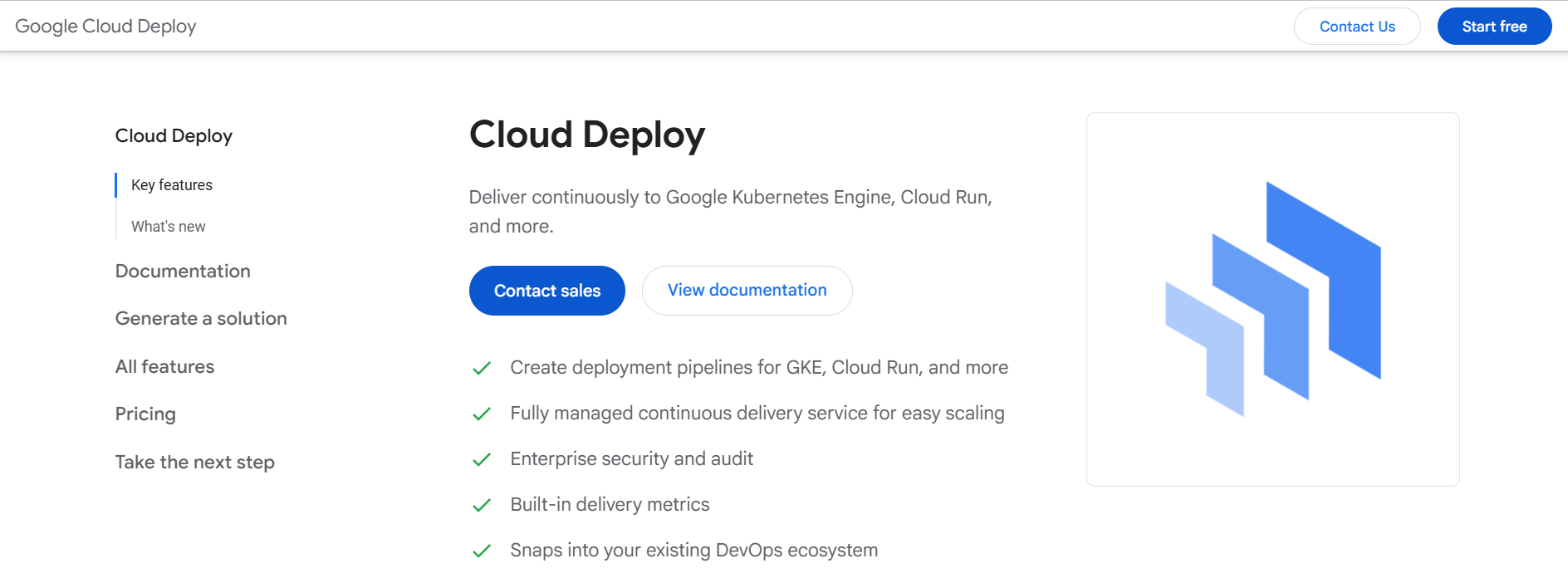 GCP is popular for AI, analytics, and data-intensive workloads. It offers advanced machine learning APIs, BigQuery for real-time analytics, and strong Kubernetes-native support (unsurprising, since Kubernetes was originally developed by Google).
GCP is popular for AI, analytics, and data-intensive workloads. It offers advanced machine learning APIs, BigQuery for real-time analytics, and strong Kubernetes-native support (unsurprising, since Kubernetes was originally developed by Google).
However, while GCP’s technology is cutting-edge, its pricing and limited customer support often deter smaller businesses. It’s best suited for engineering-heavy teams that can leverage its advanced toolset.
Where GCP excels?
- Industry-leading AI and data analytics services
- Seamless Kubernetes integration
- Strong security and performance
Where GCP falls short?
- Limited global market share and fewer support options
- Complex setup and steep learning curve for new users
Here are the Top Google Cloud Alternatives developers using in 2025
5. Oracle Cloud Infrastructure (OCI)
 Oracle Cloud has gained traction in recent years for its predictable pricing and strong database performance. It’s especially attractive for enterprise workloads that require deep integration with Oracle databases or applications.
Oracle Cloud has gained traction in recent years for its predictable pricing and strong database performance. It’s especially attractive for enterprise workloads that require deep integration with Oracle databases or applications.
However, OCI’s developer experience and ecosystem still lag behind hyperscalers, and its interface can feel unintuitive for teams transitioning from simpler cloud platforms.
Where Oracle Cloud excels?
- Consistent network performance
- Strong database and enterprise app support
- Competitive pricing compared to IBM Cloud
Where Oracle Cloud falls short?
- Limited ecosystem and developer tooling
- Smaller community and integration options
For businesses seeking an enterprise-grade platform with easier automation, here are the Oracle alternatives that provides the scalability of a large cloud with startup-level agility.
6. DigitalOcean
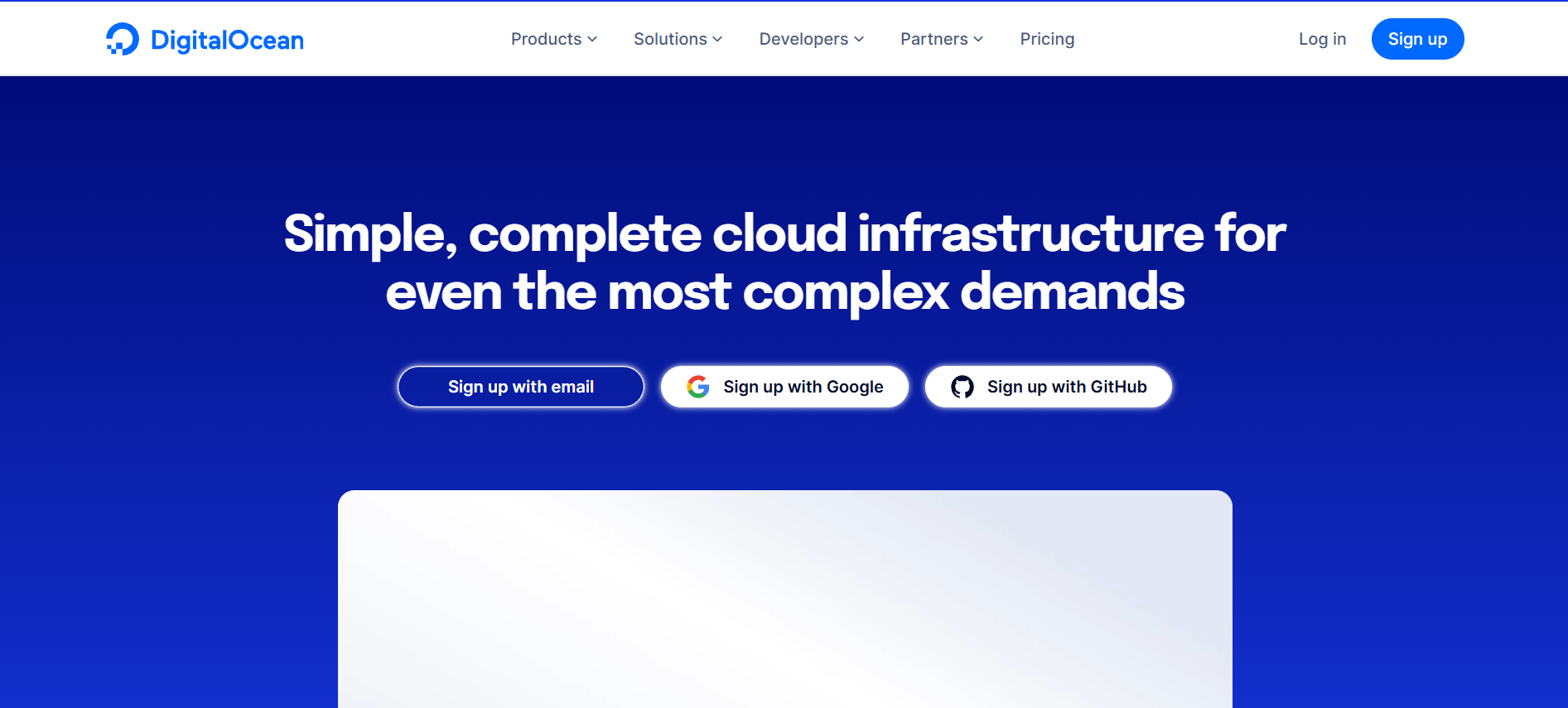 DigitalOcean is one of the most popular cloud platforms among developers, freelancers, and small businesses looking for simplicity. Its user interface is clean, documentation is beginner-friendly, and its pricing is straightforward.
DigitalOcean is one of the most popular cloud platforms among developers, freelancers, and small businesses looking for simplicity. Its user interface is clean, documentation is beginner-friendly, and its pricing is straightforward.
Compared to IBM Cloud, DigitalOcean offers a faster setup process and a less overwhelming service list, making it ideal for smaller workloads or early-stage startups. However, it lacks advanced enterprise features like AI-driven scaling or hybrid cloud integrations.
Where DigitalOcean excels?
- Transparent and simple pricing
- Fast and intuitive setup
- Large developer community
Where DigitalOcean falls short?
- Limited enterprise-level services
- Fewer automation and AI features
For teams that eventually outgrow DigitalOcean and want advanced scaling, built-in monitoring, and automated deployment pipelines, here are the digitalocean alternatives that provides an easy migration path without adding complexity.
7. Vultr
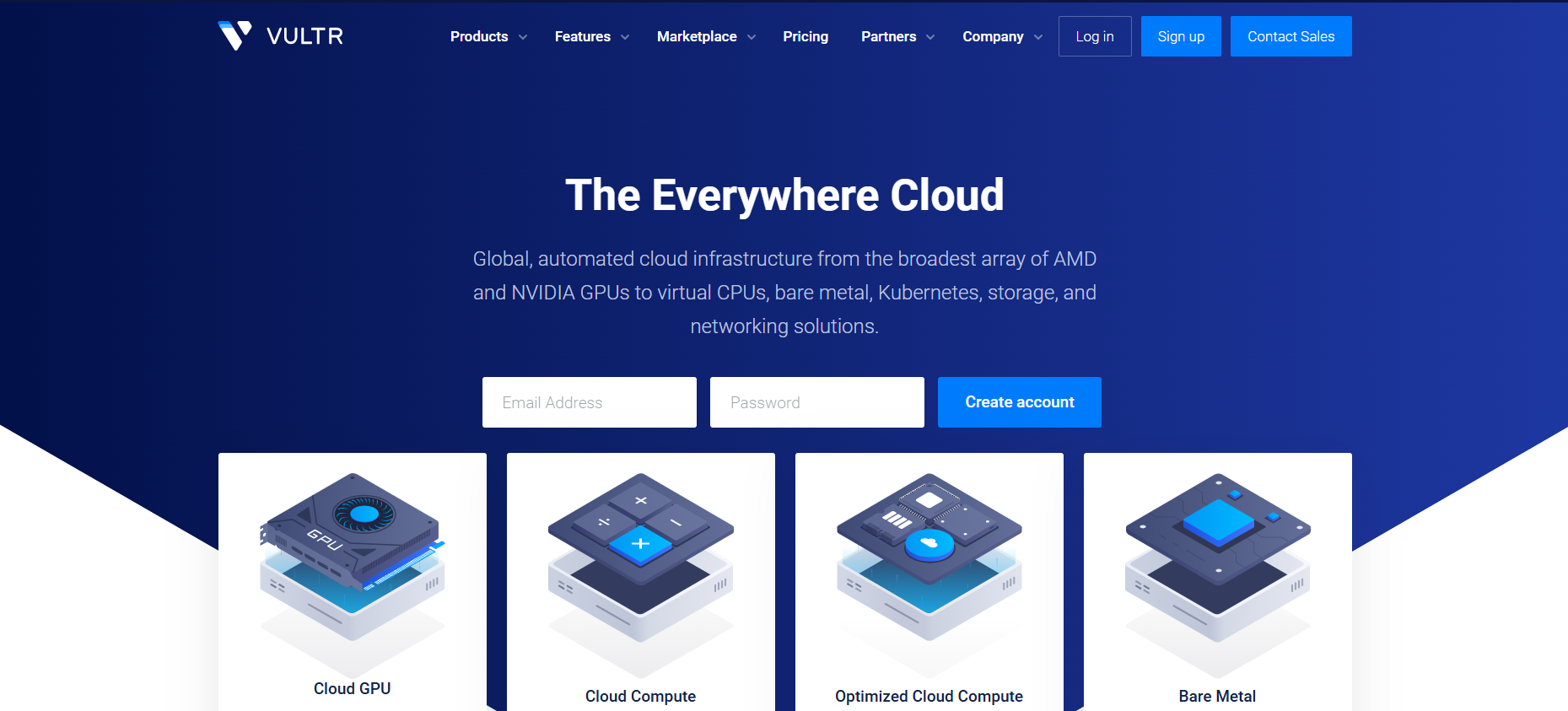 Vultr is another strong contender for users moving away from IBM Cloud, known for its affordability and quick provisioning. It’s especially suitable for developers looking to host small to mid-size applications or testing environments.
Vultr is another strong contender for users moving away from IBM Cloud, known for its affordability and quick provisioning. It’s especially suitable for developers looking to host small to mid-size applications or testing environments.
While Vultr’s performance is solid for its price point, its infrastructure isn’t designed for enterprise-scale workloads or teams that require automation beyond basic scaling.
Where Vultr excels?
- Highly competitive pricing
- Global network with good performance
- Ideal for small deployments and sandbox projects
Where Vultr falls short?
- Limited enterprise-grade tools
- Basic monitoring and automation capabilities
For developers who love Vultr’s simplicity but need intelligent scaling and CI/CD integration, here the platforms that offers a familiar experience with far more power and cost control.
8. Hetzner
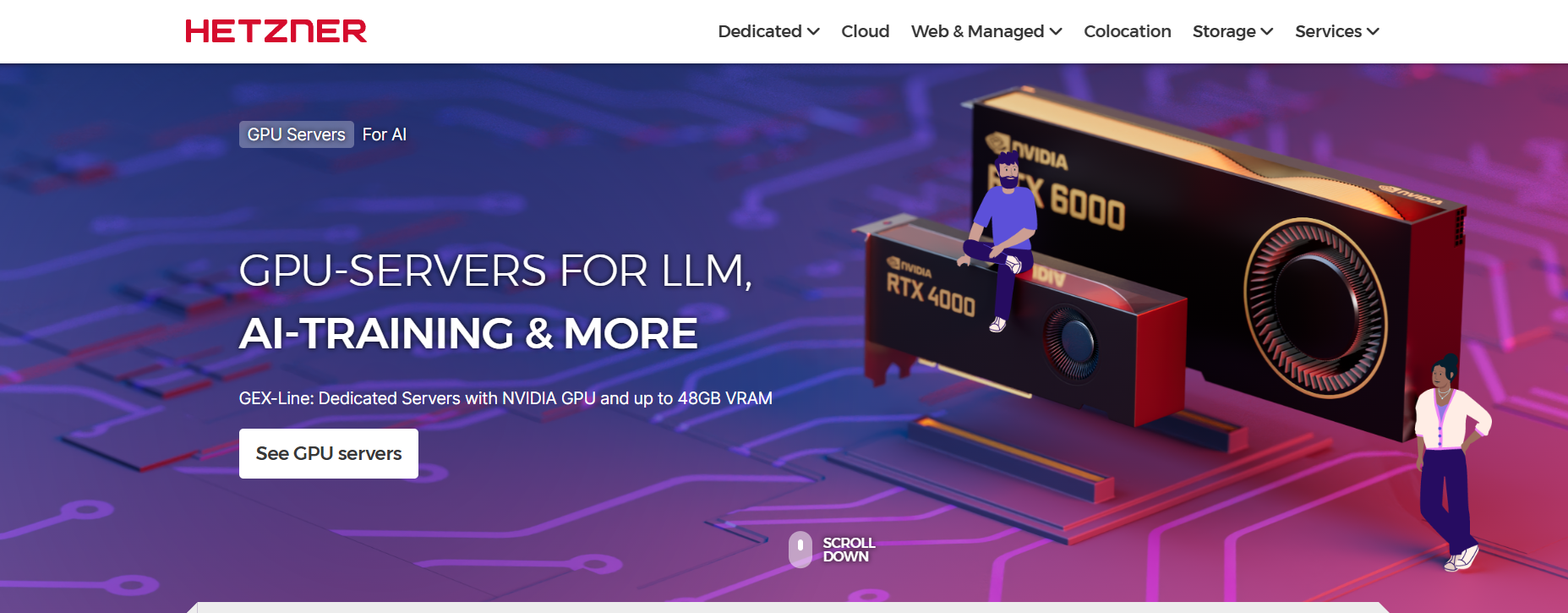 Hetzner is a German-based cloud provider that stands out for its cost-effective infrastructure and reliable performance. It’s often chosen by European businesses for its transparent pricing and strong compliance with EU data protection laws.
Hetzner is a German-based cloud provider that stands out for its cost-effective infrastructure and reliable performance. It’s often chosen by European businesses for its transparent pricing and strong compliance with EU data protection laws.
However, Hetzner’s data center locations are primarily limited to Europe, making it less suitable for global or high-latency-sensitive applications. It also lacks some of the modern DevOps automation and managed services offered by newer platforms.
Where Hetzner excels?
- Extremely cost-efficient servers
- Transparent billing and no hidden charges
- Strong EU data compliance
Where Hetzner falls short?
- Limited global reach
- Fewer automation and managed service options
For businesses outside Europe or those needing AI-based resource management, these Hetzner Alternative Options offers a more global and automated infrastructure layer built on AWS.
9. Kamatera
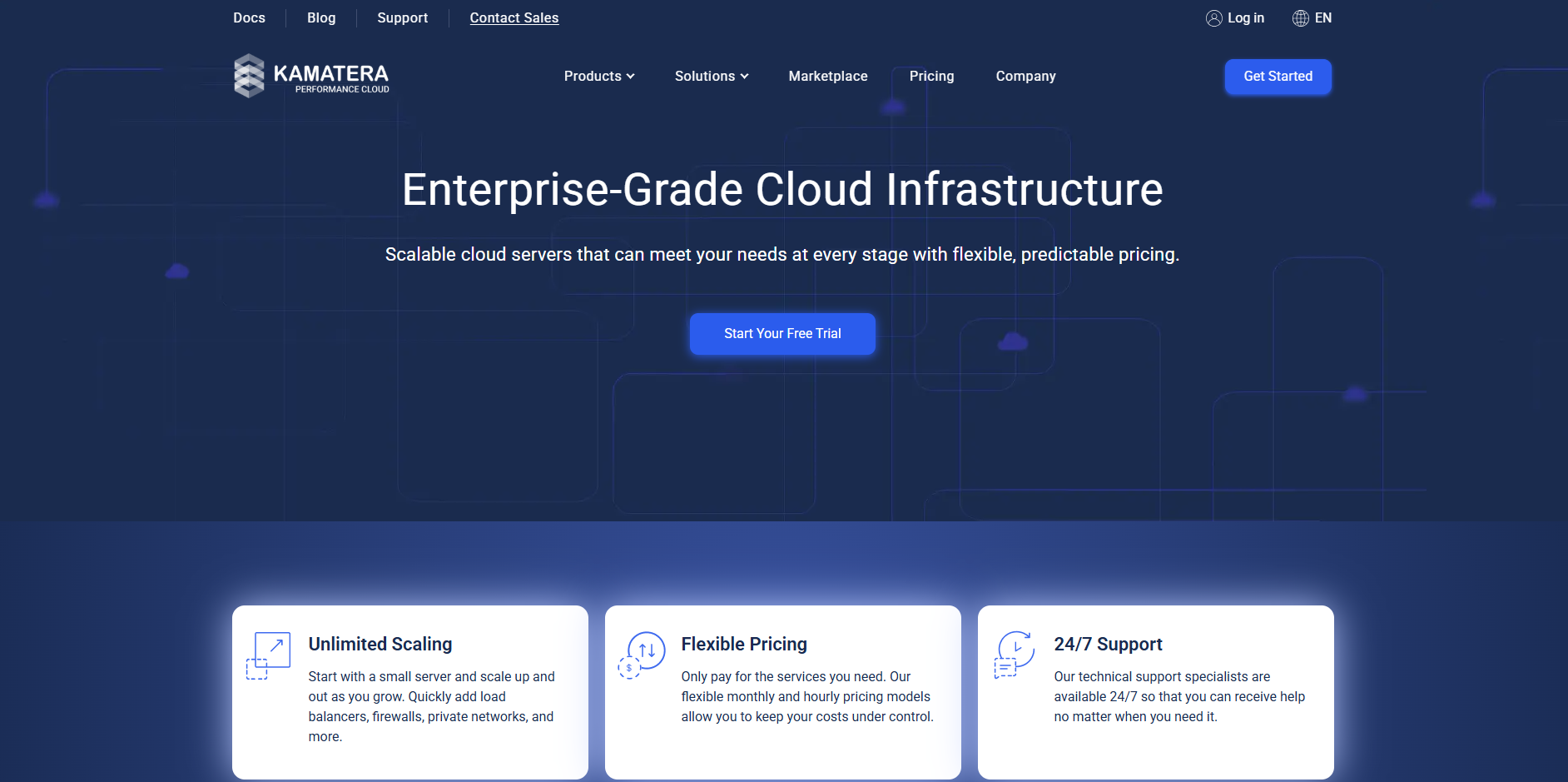 Kamatera is a flexible and highly configurable IaaS provider that allows users to deploy servers with custom specs in minutes. It’s known for its granular control, giving developers full freedom to adjust compute power, storage, and networking.
Kamatera is a flexible and highly configurable IaaS provider that allows users to deploy servers with custom specs in minutes. It’s known for its granular control, giving developers full freedom to adjust compute power, storage, and networking.
While Kamatera is powerful, its pricing can become inconsistent with usage spikes, and its interface feels more like a traditional infrastructure management tool rather than a modern DevOps platform.
Where Kamatera excels?
- Full control over configurations
- 13+ global data center locations
- Excellent uptime and reliability
Where Kamatera falls short?
- Lacks modern automation and AI tools
- Can be overwhelming for new users
For developers who like Kamatera’s control but want automation without the manual setup, here are the Top Kamatera Alternatives for Your Cloud Needs that provides an ideal balance between power and simplicity.
10. OVHcloud
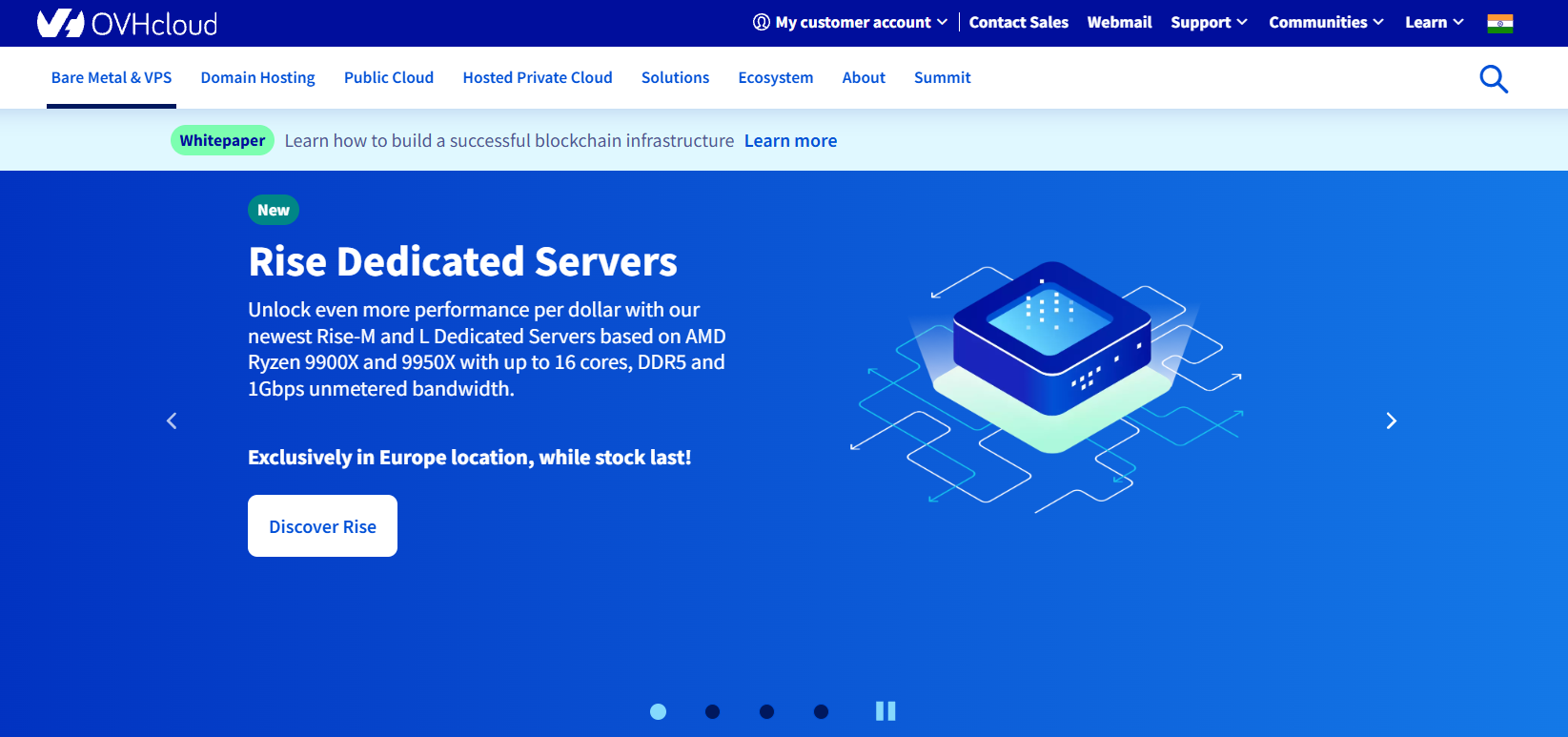 OVHcloud is another European-based provider that attracts users with its competitive pricing and data sovereignty focus. It offers a wide range of services similar to IBM Cloud but with simpler setup and more cost transparency.
OVHcloud is another European-based provider that attracts users with its competitive pricing and data sovereignty focus. It offers a wide range of services similar to IBM Cloud but with simpler setup and more cost transparency.
While OVHcloud has expanded rapidly, users have often reported slower customer support and inconsistent reliability across regions.
Where OVHcloud excels?
- Affordable hosting and compute options
- Focus on data privacy and compliance
- Suitable for small to medium businesses
Where OVHcloud falls short?
- Support response time can be slow
- Limited automation and AI-based scaling
For growing teams that need a cloud platform with fast support, AI optimization, and deployment automation, these are the Best OVH Alternatives that have far more scalable options.
Comparison Table: IBM Cloud vs Top Alternatives
When comparing IBM Cloud with other leading IaaS providers, it’s clear that the market in 2025 is shifting toward automation-first, transparent, and performance-driven platforms.
The table below outlines how the top cloud platforms stack up in terms of strengths, target users, pricing, and unique differentiators.
| Provider | Key Strength | Ideal For | Pricing | Key Differentiator |
|---|---|---|---|---|
| Kuberns | AI-powered deployment automation, built on AWS infrastructure | Startups, SMBs, Dev Teams | Up to 40% Lower | Combines AWS reliability with AI cost optimization and one-click deploy |
| AWS (Amazon Web Services) | Global scale and enterprise-grade services | Large enterprises | High | Largest cloud ecosystem, broadest service range |
| Microsoft Azure | Hybrid and enterprise integrations | Corporates using Microsoft stack | High | Deep integration with Microsoft 365 and on-premise systems |
| Google Cloud Platform (GCP) | Data analytics and AI capabilities | AI, ML, and data-driven teams | Moderate | Industry-leading AI/ML APIs and analytics tools |
| Oracle Cloud Infrastructure (OCI) | Predictable pricing and high-performance compute | Enterprises and database-heavy apps | Moderate | Optimized for Oracle DB workloads and enterprise migrations |
| DigitalOcean | Simple UI and transparent pricing | Developers and small startups | Moderate | Fast setup, predictable billing, and clean UX |
| Vultr | Affordable and lightweight infrastructure | Small teams, test environments | Low | Fast provisioning with low-cost compute instances |
| Hetzner | Cost-efficient EU-based servers | European businesses and projects | Low | Transparent pricing with strong EU data compliance |
| Kamatera | Fully customizable cloud infrastructure | Technical teams and IT consultants | Flexible | Granular server control and flexible configurations |
| OVHcloud | Low-cost hosting and data compliance | SMBs and regional deployments | Low | Competitive pricing with strong data sovereignty |
| IBM Cloud | Hybrid enterprise workloads and governance | Large enterprises | High | Deep enterprise compliance and hybrid integrations |
Why Kuberns is the Smarter IBM Cloud Alternative
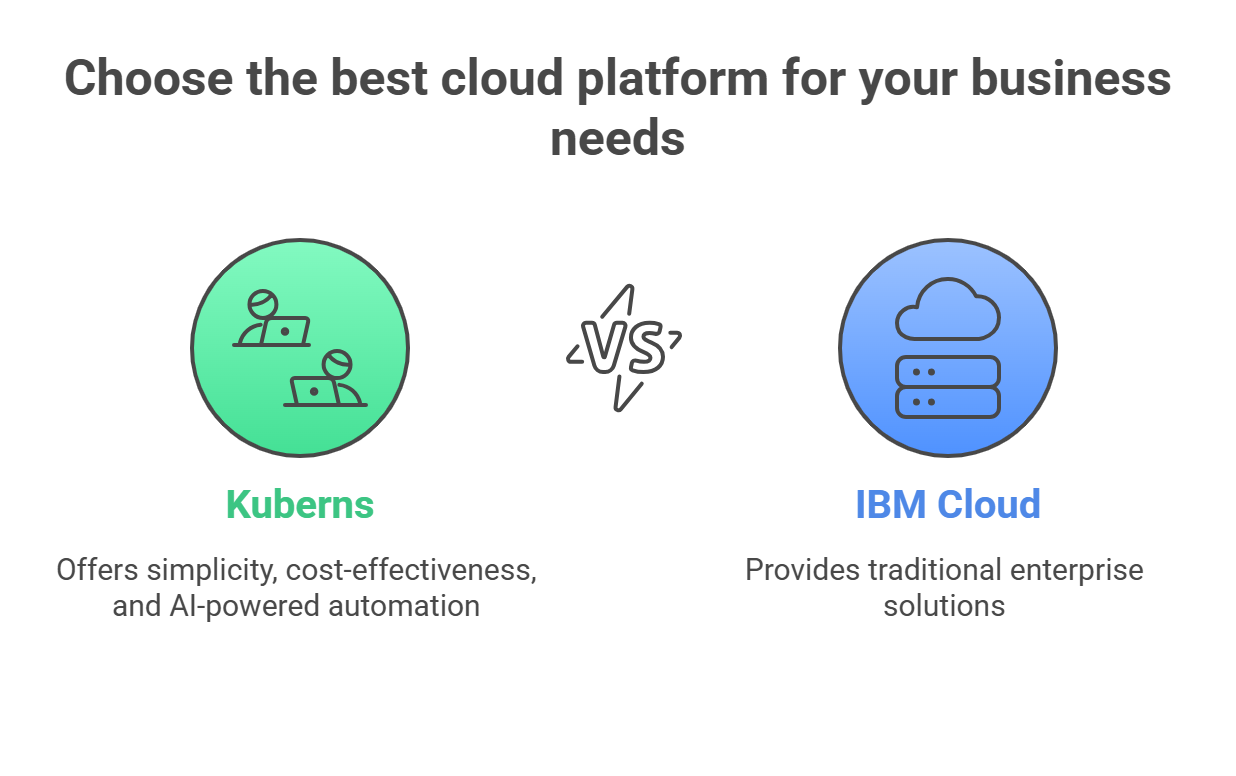 As cloud technology evolves, businesses no longer want complexity, they want clarity, automation, and efficiency. That’s exactly where Kuberns stands apart.
As cloud technology evolves, businesses no longer want complexity, they want clarity, automation, and efficiency. That’s exactly where Kuberns stands apart.
While IBM Cloud is built for traditional enterprise workloads, Kuberns is designed for the modern developer and fast-scaling team that values simplicity and performance without paying enterprise-level prices.
1. AI-Powered Deployment Automation
Kuberns automates the entire deployment cycle, from build to release using AI. Instead of manually configuring instances or pipelines, developers can connect their Git repository and deploy in a single click. This means no YAML files, no tedious infrastructure setup, and zero DevOps overhead.
Result: teams ship features faster, reduce operational load, and minimize the risk of human error.
2. Up to 40% Lower Cloud Costs
Kuberns runs on optimized AWS infrastructure and intelligently manages workloads to deliver enterprise-grade reliability at a fraction of the cost. Through smart provisioning and pooled resources, teams typically save up to 40% compared to IBM Cloud or direct AWS usage, without compromising on performance or security.
3. Predictable Usage-Based Pricing
Unlike IBM Cloud’s tiered and often confusing pricing model, Kuberns follows a transparent usage-based model. You pay only for the resources you use, no hidden charges for bandwidth, storage, or compute spikes. This makes budgeting simple for startups, freelancers, and growing SaaS teams.
4. Built-In CI/CD and Monitoring
Kuberns eliminates the need for multiple third-party tools. It includes:
- Integrated CI/CD pipelines
- Real-time monitoring and logs
- Auto-scaling environments
- Team collaboration features
This unified setup helps teams manage everything from deployment to scaling in one place, reducing context-switching and simplifying workflows.
5. Optimized for Startups and Fast-Growing Teams
Kuberns isn’t just a platform; it’s built around how modern teams actually work. Whether you’re a solo developer launching your first app or a growing SaaS company deploying across multiple environments, Kuberns adapts automatically, no manual setup required.
With AI handling infrastructure and scaling, your team can focus on building features, improving UX, and shipping products faster.
6. Backed by AWS Infrastructure and Enterprise Security
Kuberns leverages AWS infrastructure under the hood, ensuring global availability, strong encryption, and compliance with enterprise-grade standards. You get AWS-level reliability and security, minus the complexity of managing it yourself.
In short, If IBM Cloud feels slow, expensive, or too enterprise-focused, Kuberns offers a smarter, AI-driven path forward. It’s not just another alternative. It’s the next generation of IaaS designed for simplicity, automation, and cost efficiency.
Making the Right Choice: Find a Cloud That Grows With You
Choosing an IBM Cloud alternative isn’t just about comparing features or prices. It’s about finding a platform that evolves with your business.
Over the past few years, the cloud ecosystem has shifted dramatically. Businesses no longer want vendor lock-in, long configuration times, or unpredictable billing.
They want speed, clarity, and scalability, the ability to deploy in minutes, scale automatically, and trust that their infrastructure will stay optimized as they grow.
Traditional platforms like IBM Cloud still serve a purpose for enterprise-scale legacy systems, but they can slow down innovation for fast-moving teams.
That’s why so many startups and SMBs are moving toward platforms that blend automation, performance, and cost predictability.
Kuberns take this philosophy further, simplifying infrastructure so developers can focus entirely on building products, not managing servers.
By combining AI-powered automation with predictable pricing and AWS-grade performance, it gives teams exactly what they need to move faster and scale smarter.
So when you compare your options, look beyond the specifications, look for a platform that keeps things simple, efficient, and cost-effective in the long run.
The right choice is the one that helps you build more and manage less.

Frequently Asked Questions
1. What are the best IBM Cloud alternatives in 2025?
Some of the best IBM Cloud alternatives in 2025 include Kuberns, AWS, Microsoft Azure, Google Cloud Platform, Oracle Cloud, DigitalOcean, and Hetzner. While each platform serves different needs, Kuberns stands out for its AI-powered deployment automation and up to 40% cost savings on AWS infrastructure.
2. Why are companies moving away from IBM Cloud?
Many businesses are switching from IBM Cloud due to its complex pricing, slower innovation, and limited developer ecosystem. Modern platforms now focus on automation, transparency, and predictable costs, allowing teams to scale faster without added operational overhead.
3. Which IBM Cloud alternative is most cost-effective?
For cost-conscious startups and SMBs, Kuberns offers one of the most predictable pricing models in the industry. Built on AWS, it delivers enterprise-grade reliability at nearly 40% lower cost, making it a top choice for those seeking both performance and affordability.
4. Is IBM Cloud good for startups?
IBM Cloud is typically better suited for large enterprises with legacy systems and hybrid IT needs. Startups and growing teams usually prefer simpler, AI-driven platforms that help them deploy and scale quickly without managing complex infrastructure.
5. How can I migrate from IBM Cloud to another provider?
Most IBM Cloud workloads can be migrated using containerized applications, API-based integrations, or managed migration services. Kuberns simplify this transition with one-click Git-based deployments, automated scaling, and integrated monitoring to minimize downtime.